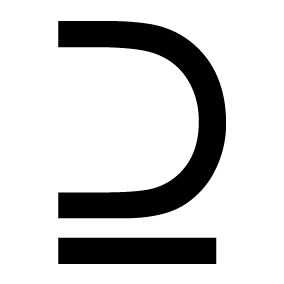Providing designers with a clear career path ensures long-term retention. A transparent and evolving competency model allows designers to grow, collaborate, and stretch into new responsibilities.
By Sofie Gillstedt, CX Strategy and Research Lead, H&M
Psychological Safety as Prerequisite
This thorough approach isn’t just about delivering results—it also fuels creativity. Designers at H&M are encouraged to have the psychological safety to experiment and learn. This emphasis on psychological safety creates conditions where designers can take appropriate risks and pursue deeper insights rather than rushing to superficial solutions. Working with psychological safety is always ongoing and needs leadership respect. It takes time and effort to build it, but it can be lost in a flash.
“People often get stressed about finding solutions quickly. We focus on creating an environment where they feel safe to explore, even if that means being wrong, we learn best from mistakes”
Leaders as Door Openers
For H&M, leadership has played a critical role in embedding Service Design into the organisational culture.
“Good leaders are door openers. They don’t micromanage—they’re curious about design as a skillset and trust the people who trust the process. It’s about balancing guidance with space for creativity.”
Weathering the Storm Together
“Service Design stirs things up. It hijacks the way things work internally. It forces teams to confront the user experience in a way that requires real, often uncomfortable, change. And that is never easy.”
For Service Designers to succeed in this disruptive role, they must operate in an environment built on trust.
“The most important thing is that designers know their leaders have their back. Service Design isn’t for the faint of heart. When you challenge systems and bring the user to the forefront, it creates friction. It’s stormy. Designers need to feel supported through that storm.”
Trust also means allowing designers the time and space to do their best work.
“You have to trust that the designer knows what they’re doing. They need the freedom to explore, iterate, and uncover insights. And they need transparency about how decisions are made, so they can navigate the complexities of the organization effectively.”
By Karin Hedman, Head of Customer Experience Design, Scania
Creating Clear Career Paths for Designers
Career paths for designers at Scania are evolving, with more opportunities for strategic roles. Some designers move into leadership positions, while others prefer to remain in specialized design roles. However, shifting from UX to broader Service Design or Journey Leadership roles can be challenging, as it requires transitioning from short-term, product-focused work to long-term strategic thinking.
Many designers have strong facilitation and communication skills, which open opportunities to contribute to collaboration and alignment within the organization. However, balancing depth of expertise with the ability to take a broader perspective remains a challenge.
One recurring challenge is the terminology around design roles. The term “Service Design” is well understood within certain areas, but in other parts of the organization, it is less clear. As a result, different departments have adapted job titles to better fit their context, such as “UX Engineer” in R&D or “Smart Vehicle Function Designer.” This variation reflects the ongoing need for greater clarity and alignment regarding design roles across the organization.
By Bhu Nyström-Kandola, Design Manager at Volvo
Clear Roles and Growth Opportunities
One of the most fundamental aspects of employee retention is providing clear roles and opportunities for growth. Employees need to understand how they can develop within the organization and what steps they need to take to advance. Its important to have a clear career trajectory:
“Designers want to know where they can develop, how they can get better, and how they are measured.”
A well-defined career framework not only helps in setting expectations but also in fostering a sense of purpose and direction among employees. This framework should include skill development opportunities, career ladders, and transparent criteria for progression.
“You need to have some type of framework, some skill framework, some sort of career ladder. This helps in holding career development conversations and providing guidance.”
The Cost of High Employee Turnover
High employee turnover can be detrimental to an organization, both in terms of cost and lost productivity. Frequent recruitment to replace departing employees not only incurs significant costs but also disrupts the continuity of work and stakeholder relationships.
“Having a high churn rate directly impacts recruitment and can be a deterrent for potential hires.”

